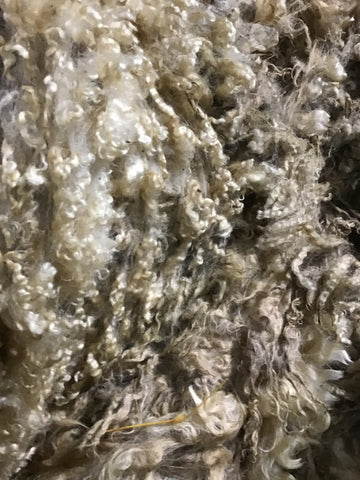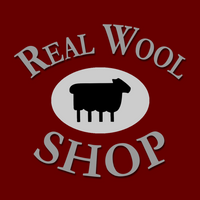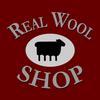Canadian Co-Operative Wool Growers Limited 🍁
Learn about the history of the Canadian Co-Operative Wool Growers and how wool is handled! Established in 1918, the Canadian Co-Operative Wool Growers has come a long way! Learn about the process our wool goes through from the first stage in the Co-op warehouse to the last stage in the Real Wool Shop. See how our products go on a journey from wool to fashion!
Our History
The Co-operative was established in 1918 by the sheep industry as a national system of collecting and marketing its members' wool on a cooperative basis. This meant that regardless of the size of the wool clip, the time of year received or the distance from the market, each member was paid the same price for the same grade of wool. Being merely an instrument of the growers, the company operates quite simply. It collects, grades, measures, and markets the producer's wool and after deducting the cost of operations returns the entire difference to the growers.
The Co-operative grades and markets approximately 3 million pounds of raw wool each year from producers all across Canada. Each of the three general classes of wool (fine, medium, and coarse) are sold wherever the best price is available, China is a major buyer. Wool is received directly from the producer by way of truck or rail. It is then graded according to type classification, quality, and method of preparation. Wool of similar types and quality are hydraulically packed in bales weighing up to 1,200 pounds, then core sampled to obtain objective measurement test reports for marketing purposes.
The wool arrives in large sacks or square pouches, raw from the sheep. At the warehouse, it is graded according to the fibre diameter (micron) and length of the fibres, yield, colour, and amount of foreign matter present in the wool. After grading, the wool is shipped out in compact bales. Ninety percent of all the wool is exported out of Canada.
The company's mandate is to be a producer co-operative endeavouring to market wool at the top price it deserves while operating the business efficiently to maximize returns to the wool producer.
Canadian Co-operative Wool Growers Limited occupies what was once the round house and machine shops for the Canadian Pacific Railway. The company's head office is located in Carleton Place, Ontario and is a totally Canadian company.

When used by the CPR (1890 - 1939), as many as 200 men were employed in this building. It was a serious loss to the town when the whole operation was moved to Smiths Falls, Ontario in 1939. Still, Carleton Place is not easily discouraged, and in the fall of 1940, the "roundhouse" was once again open.
No, the CPR did not return, the "wool growers" moved in. The General Manager, says the place was a mess ... tracks, turn table, wheels ... anything and everything needed for train repair could be found in the building. In 1940, at the beginning of World War II, scrap iron was much in demand and what might have been a liability was turned into an asset.
After a massive cleanup, Canadian Co-operative Wool Growers Limited was in business. On the direct line (CPR) from the West through to Montreal, Carleton Place was in an excellent position to handle wool from the West and ship it via Montreal, to England, Holland, and Germany, as well as all over Canada. During the war, some of these ports were closed to Canadian business but were reopened at the close of hostilities.
When the Company opened in Carleton Place, its main warehouses were in Weston, Ontario. Due to the changing wool industry, in 1967 these buildings were sold, and the entire wool grading operation was moved to Carleton Place. The administration offices in Toronto were retained until 1972, then they were also moved to Carleton Place. The administration offices are housed in the section of the building that was once the storage room and boiler room for the CPR.

In addition to handling wool, the Co-operative operates CCWG Livestock Supply outlets across the country and a Real Wool Shop at Carleton Place. The Co-operative also publishes an annual magazine entitled The Canadian Co-operative Wool Growers Magazine & Livestock Supplies Catalogue which is designed to assist the livestock producer with information and a mail-order catalogue for livestock supplies, equestrian products & clothing. E-commerce is available for online purchases at www.ccwg.ca & www.realwoolshop.ca.
In 1979, the CCW decided to put the old CPR coal bins to use and in August of that year "The Real Wool Shop" was opened. It is difficult to imagine how anyone could wear wool if all you ever see is a "bag of fluff". The Co-op Warehouse shows the first stage - the Real Wool Shop shows the final one www.realwoolshop.ca In 2006 the engine house of the CPR Round House was renovated and is now our Equestrian Centre for tack and western clothing. This room also contains a mini museum with numerous railway memorabilia on display.
Canada's Wool To Market
SHEEP: Early French settlers brought the first sheep to Canada in about 1650. Canada's sheep population has varied considerably but today there are over one million with the largest flocks in Quebec, Ontario and Alberta. Most Canadian sheep are bred for meat. Suffolk, Southdown, Hampshire, Dorset, Cheviot and Arcott are among the most popular breeds. Wool breeds include Rambouillet, Corriedale, Columbia and Targhee.
SHEARING: The usual practice is to shear in the spring before lambing. An expert shearer using power equipment, similar to barber clippers only larger, can shear a sheep in less than five minutes, rolling off the fleece in one piece. Fleeces are sacked and shipped to the Canadian Co-operative Wool Growers for grading and marketing.
GRADING: Wool is weighed when it arrives at the CCWG warehouse and then graded and core tested. Grading is very labour-intensive. The raw wool is spread out, inspected by hand and classified by average diameter (micron) and length of the fibre, colour, lustre and crimp (tight, natural wave). From Carleton Place, the graded grease wool is packed in 1,200 pound bales and shipped to world markets.
MARKETING: Although Canada's three million pounds is a fraction of the world's production, Canadian wool has a niche because of its high elasticity. This elasticity or springiness enables wool to retain its original shape. Canadian wool is blended with wool from other countries with less of this desirable characteristic. Since there is virtually no wool processing in this country, only ten percent of Canada's production is sold here. Ninety percent is exported to Britain, France, Germany, Spain, Japan, the United States, China and India.
WOOL SYSTEMS: The complexity of wool processing is why the wool is graded before it is sold. Medium wool goes to WOOLEN systems and becomes sweaters, knitting yarn and tweed fabrics. The finer wool enters the WORSTED system, undergoing an additional process called combing and drawing which removes short ends, (noils) and further straightens the long, smooth fibres. This wool makes the finest of wool fabrics. Coarse wool is streamed into the CARPET system.












Leave a comment